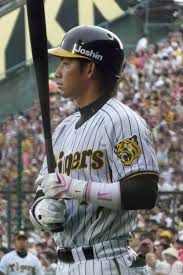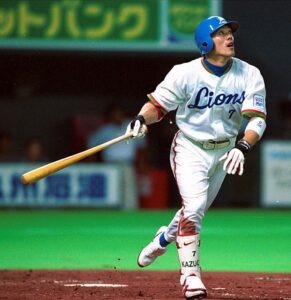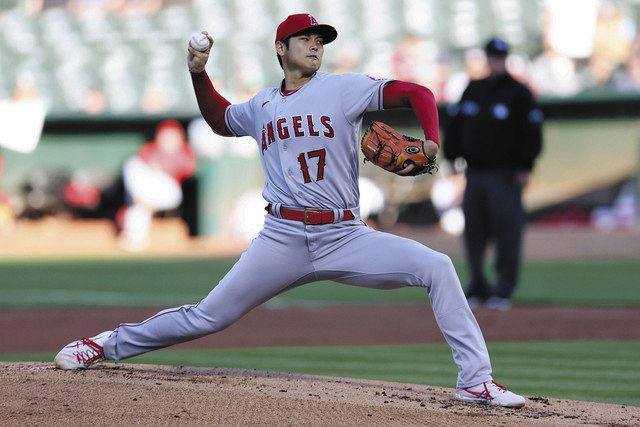
In baseball, the “5th” position plays a very important role in the batting lineup.
As part of the cleanup hitter, the fifth batter has the power to influence the flow of the game.
Therefore, the fifth batter is required to have not only strong batting technique and power, but also the ability to judge the situation and mental strength.
In this article, we will explain in detail the role and importance of the number 5 batter in baseball, including the latest information.
We cover a wide range of topics, from a historical perspective to modern trends, specific strategies, introductions to famous players, training methods, and data analysis.
First, let’s look at some basic information about the No. 5 batter.
目次
- 1 Basic information about the number 5 in baseball
- 2 Baseball: The strategy and importance of the number 5
- 3 Baseball’s number 5 player
- 4 Training and preparation for the fifth batter
- 5 5th batter statistics and data analysis
- 6 The future and outlook for the fifth batter
- 7 The influence and culture of the number 5 in baseball
Basic information about the number 5 in baseball
In baseball, the number 5 refers to a batter who plays a very important role in the team’s batting order.
The fifth batter is the one who makes the most of scoring opportunities and can greatly influence the flow of the game.
Here we take a closer look at the No. 5 hitter position, its characteristics and role, as well as its history.
The number 5 position in baseball
The fifth batter usually plays a role as one of the cleanup hitters in the batting order.
The cleanup hitters are the third, fourth, and fifth batters, and are expected to be the team’s source of runs.
In particular, the fifth batter follows behind the fourth batter and has the role of returning the runner to home plate if the previous batter has put a runner on base.
For this reason, the fifth batter is required to have strong hitting power and excellent batting technique.
As for their position, they often play an important role in defense, often as third baseman or outfielder.
In addition to defensive ability, players are required to have stable batting skills to keep the team’s offensive momentum going.
Characteristics and role of the fifth batter
Some characteristics of a number 5 hitter are:
Powerful hitting : The fifth batter needs the power to hit home runs and long hits. To take advantage of scoring opportunities, he is expected to hit a shot that can change the flow of the game with one hit.
Batting technique : Not only power, but also the flexibility to hit according to the situation is required. For example, techniques such as bunts, sacrifice flies, and hit-and-runs to advance runners are also important.
Stability : The fifth batter is expected to have a high batting average and a stable performance. In particular, a player with a high batting average in scoring position is suitable for this position.
Mental strength : You also need mental strength to remain calm in pressure situations. This is especially important when you’re at bat at a crucial time in the final stages of a game.
Baseball: The origin and history of the number 5
The role of the fifth batter has evolved throughout baseball’s history.
In the early days of baseball’s development, the importance of batting order was not as clearly defined as it is today.
However, in the early to mid-20th century, the batting order began to take on a strategic role, and the importance of the fifth batter as part of the cleanup hitter became established.
For example, in Major League Baseball (MLB), many great players have historically played as the fifth batter.
Players such as Lou Gehrig of the Yankees and Ted Williams of the Boston Red Sox helped their teams score runs as the fifth batter.
The fifth batter is also an important position in Nippon Professional Baseball (NPB).
For example, Sadaharu Oh of the Yomiuri Giants and Koji Yamamoto of the Hiroshima Carp were loved by many fans as the fifth batter.
These players not only provided batting power but also served as the spiritual pillars of the team.
The importance of the fifth batter remains the same even in modern times.
With advances in data analysis and statistics, the role of the fifth batter has become more strategically defined, and a scientific approach is also being used to select him.
This allows for an optimal batting order to be created that maximizes a team’s scoring efficiency.
The above is a detailed explanation of the basic information about the fifth batter in baseball.
The importance of this position is vital to baseball strategy, and its role will continue to evolve in the future.

Baseball: The strategy and importance of the number 5
In baseball, the fifth batter plays an important role in the team’s batting lineup.
The presence of a fifth batter not only supports a team’s scoring ability, but often also greatly influences the flow of the game.
Here we will take a closer look at the strategic role of the fifth batter, his impact on the team, and the criteria for selecting him.
The strategic role of the fifth batter
The fifth batter is part of the cleanup hitters in the batting lineup and is responsible for maximizing the team’s scoring opportunities.
In particular, the third and fourth batters are expected to bring runners home after they reach base.
This means that the No.5 hitter has the following strategic roles:
Strength in scoring position : The fifth batter often comes to bat when there are runners in scoring position. If he can get a hit or a long hit here, it will directly lead to the team scoring.
Slugging power and power : The fifth batter needs the power to hit home runs and long hits. In particular, the hitting power to send runners home in one go is an important factor in changing the flow of the game.
Flexibility according to the situation : Flexibility to play team plays according to the situation, such as sacrifice flies and bunts, is also important. Plays that advance runners towards the latter half of the batting order are also required.
The impact of the fifth batter on a team
The presence of a fifth batter has a significant impact on the team’s overall offensive power.
If the fifth batter can consistently produce results, it will have a positive effect on the other batters and energize the entire batting line-up.
Relief of pressure : When other cleanup hitters (especially the cleanup hitter) feel pressured, the presence of the fifth batter provides psychological support. This allows the cleanup hitter to feel more relaxed when he steps up to the plate.
Maintaining the batting flow : If the No. 5 batter can produce results when the opportunity arises, the offensive flow will not be interrupted and you will be able to continually create scoring opportunities. This will allow you to keep the pressure on the opposing pitcher.
Leadership and experience : The No. 5 hitter is often one of the most experienced players on the team. Their leadership and game experience can serve as a role model for the younger players and boost morale throughout the team.
Criteria for selecting the fifth batter
Many factors are taken into consideration when selecting the No. 5 batsman.
The main selection criteria are as follows:
Batting performance : Batting performance such as batting average, on-base percentage, and slugging percentage are the most important criteria for selecting the No. 5 hitter. Players with a high batting average in scoring position are especially favored.
Power and long hits : Power is an important factor for a fifth batter, as it allows him to hit home runs and long hits, which greatly increases his chances of scoring.
Match experience : A player with plenty of match experience and experience playing in important situations is a good choice for the No. 5 batsman. Experienced players are more reliable as they can keep a cool head in pressure situations.
Mental strength : The No. 5 batter often comes up to bat at crucial moments in the game, so mental strength is also an important selection criterion. A player who can handle pressure well and make calm decisions is required.
The fifth batter is an important position that supports the team’s scoring ability, and careful decision-making is required when selecting him.
Selecting the best fifth batter based on the latest information and data will lead your team to victory.

Baseball’s number 5 player
In baseball, the fifth batter plays an important role in a team’s batting lineup, and many famous players have played this position.
The power and consistency of the No. 5 hitter often determines the outcome of a game, and the history of the league is etched with the names of many great players.
Here we will take a closer look at some of the most famous fifth batters in history, fifth batters in Major League Baseball (MLB), and fifth batters in Nippon Professional Baseball (NPB).
The No. 5 hitter who made history
When thinking of the most notable fifth batter in history, the first person to come to mind is Major League Baseball’s Mickey Mantle.
Mantle, a New York Yankees legend, was known for his overwhelming batting power and competitive spirit, and played an active role in many important games as the fifth batter.
His hitting led the team and helped them win numerous championships.
Carl Yastrzemski is another one of them.
A Boston Red Sox great, his batting ability makes him an ideal No. 5 hitter.
Yastrzemski is one of the few players to ever achieve the Triple Crown (leading the league in batting average, home runs and RBIs), a feat that is still talked about today.
5th batter in major league baseball
There are many famous No. 5 hitters in Major League Baseball, and one who has attracted the most attention in recent years is Miguel Cabrera.
During his time with the Detroit Tigers, Cabrera perfectly suited himself as a fifth batter, winning numerous batting titles.
His batting technique and power set him apart from other hitters and made him the core of his team’s offense.
And let’s not forget Albert Pujols of the Los Angeles Angels.
His career is punctuated by many batting records.
In particular, he played his role as the fifth batter, bringing stability and scoring power to the batting lineup.
His presence was a great relief to his teammates.
The fifth batter in Japanese professional baseball
There are also many famous number 5 hitters in Japanese professional baseball.
One of them is Tatsunori Hara of the Yomiuri Giants.
He is known as a powerful hitter and has hit the ball to save his team in many important situations.
Hara not only showed his batting prowess, but also served as a spiritual pillar, leading the team to multiple Japan Series championships.
Hanshin Tigers’ Kanemoto Tomonori is also considered a great fifth batter.
In addition to his batting power, Kanemoto boasted durability that earned him the nickname “Iron Man,” and he played in many consecutive games.
His strong hitting and consistent performance continued to bolster the team’s offensive strength.
In addition, in recent years, Hiroshima Carp’s Suzuki Seiya has also made a name for himself.
His batting ability has improved year by year, and he is garnering attention as one of the leading sluggers in Japanese professional baseball.
As the fifth batter, Suzuki has the ability to hit long balls and has the competitive spirit to score in the scoring position, making him a central figure on the team.
The above is a detailed explanation of the “great number 5 players in baseball.”
The fifth batter is an important position that is directly linked to a team’s victory, and the achievements of the great players who have played this role will continue to be talked about for years to come.
The presence of these players will continue to shine in baseball history.

Training and preparation for the fifth batter
The fifth batter plays a very important role on a baseball team, and it requires specific training and preparation.
It requires both power and technique, as well as a strong mentality.
Here we will explain in detail the basic training for the fifth batter, the skills required, and the importance of mental preparation.
Basic training for the fifth batter
Basic physical training is essential for a No. 5 hitter to be successful.
Here are some important training elements for the No. 5 hitter:
Power training : Since the No. 5 hitter is expected to hit home runs and extra-base hits, training to improve power is essential. Weight training such as weightlifting, barbell squats, and deadlifts can help increase muscle strength and increase the distance the ball can be hit.
Speed and Agility : Speed and agility training is also important to improve reaction time at the plate and base running ability. A combination of sprints, agility drills and plyometric exercises will improve your explosiveness and mobility.
Endurance : To maintain consistent performance throughout the season, you also need to work on your endurance. Endurance training can include running and circuit training.
Skills required for the fifth batter
The fifth batter is required to have excellent batting skills.
The following are some of the most important technical aspects:
Batting Form : Proper batting form leads directly to an effective swing and power. Work with your coach to do video analysis and fine-tune your form to optimize your swing.
Contact Skills : The ability to make reliable contact with the ball is necessary to improve your batting average. Improve your contact skills through practice using tee batting and pitching machines.
Batting Eye : The ability to judge the strike zone is very important for a batter. Through ball judgment practice, you will develop the ability to judge between balls and strikes.
Situational batting : Since hitting according to the situation is required, it is also necessary to practice situational batting such as sacrifice flies, bunts, and base hits.
Mental preparation and its importance
For a No. 5 batter to be successful in a game, it is also essential that he strengthens his mental state.
Here are some points about mental preparation and why it’s important:
Staying focused : It’s important to stay focused during a match. Mindfulness and meditation can help you calm your mind and improve your focus.
Positive Thinking : Positive thinking is the key to improving your performance. Don’t be afraid of failure and always have a positive attitude, which will help you to cope under pressure.
Dealing with pressure : Learning how to deal with pressure is essential to staying calm in crucial situations. Having a pre-match routine and relaxation techniques can help you stay mentally stable.
Self-analysis : It is also important to review your own at-bats and clarify what went well and what needs improvement. This will allow you to prepare effectively for the next game.
Being prepared both physically and mentally will lead to success as a No. 5 hitter.
Let’s incorporate the latest training methods and mental strengthening techniques to strive to perform at our best.

5th batter statistics and data analysis
The fifth batter is a key position in supporting the team’s offensive power, and his performance is evaluated in detail through statistical data and data analysis.
This allows you to clearly identify your players’ strengths and areas for improvement and make strategic decisions.
Here we will take a closer look at the key statistics for No. 5 hitters, data analysis methods, and trends seen in the data.
Key statistics for the No. 5 hitter
To evaluate a No.5 hitter’s performance, it is important to look at some key statistics:
Batting average (BA) : An indicator of the probability that a batter will hit a home run. It is the ratio of the number of hits to the number of at-bats. A high batting average indicates stable hitting.
On-base percentage (OBP) : An indicator of the probability that a batter will reach base, and is the percentage of opportunities to reach base, including walks and hit by pitch. Batters with a high on-base percentage can create more scoring opportunities.
Slugging percentage (SLG) : This is an indicator of the percentage of long hits among all hits a batter has made. The fifth batter is especially expected to have a high slugging percentage.
OPS (On-base Plus Slugging) : An index that combines on-base percentage and slugging percentage, showing a batter’s overall batting power. The higher the OPS, the more valuable the batter is considered to be.
Batting average in scoring position (RISP) : This is the batting average when there are runners in scoring position, and is an important indicator for evaluating the clutch ability of the fifth batter.
Runs batted in (RBI) : This is an indicator of the number of times a batter has brought a runner home. The fifth batter is expected to have a particularly high number of runs batted in.
Method of data analysis for the fifth batter
To analyse the performance of the No.5 hitter in detail, various data analysis methods are used. The main methods are as follows:
Video Analysis : Game footage is analyzed to provide a detailed evaluation of batting form, swing timing, pitch selection, etc. Video analysis software is used to review each at-bat frame-by-frame to identify areas for improvement.
Sensor Data : Batter’s movements are recorded by sensors to measure swing speed, angle, power, etc. This allows for detailed analysis based on physical data.
Statistical Software : Statistical software such as R or Python is used to process and analyze hitting data, allowing us to extract trends and patterns from complex data sets to help improve performance.
Simulation : Use simulation software to predict the outcome of hitting under different scenarios, allowing you to consider the optimal hitting strategy.
Trends for No.5 hitters based on data
Recent data analysis has revealed a few trends regarding No.5 hitters:
Achieving both a high on-base percentage and slugging power : Today’s fifth batters are expected to have both a high on-base percentage and slugging power in order to increase scoring opportunities and put pressure on the opposing pitcher.
The Importance of Batting Eye : The ability to accurately judge the strike zone is directly linked to the success of a fifth batter. Hitters who have the ability to judge the ball have a higher on-base percentage and can improve their team’s offensive power.
Clutch player evaluation : Players with a high RSP (Range of Scoring Point) are trusted in the most important moments of the game. It is important to identify players with clutch players through data analysis.
Leveraging technology : Using the latest technology, hitting data is analysed in real time, allowing for immediate feedback and improvement, improving player performance.
By utilizing data analytics, you can optimize the performance of your No. 5 hitter and improve your team’s offensive power.
Let’s incorporate the latest data and technology to further evolve the role of the fifth batter.

The future and outlook for the fifth batter
The fifth batter has played an important role on a baseball team for many years, but that role may change as the game evolves.
Here, we will take a detailed look at the current challenges and solutions, the future role of the fifth batter, and the evolution of baseball and the changes in the fifth batter.
Current issues and solutions
Current issues with the No. 5 hitter include:
Lack of consistency : Many No. 5 hitters have power but can struggle to perform consistently. Low batting averages and on-base percentages mean they struggle to capitalize on scoring opportunities.
Study the opposing pitcher : In modern baseball, opposing pitchers are increasingly using strategies to counter the fifth batter, which means that certain batters are being held back. To counter this, you need to work on the batter’s weaknesses and improve your overall hitting technique.
Risk of injury : The fifth batter is a power hitter with a large swing and a high risk of injury. Training and conditioning are important for him to play sustainably.
Possible countermeasures include individual instruction based on data analysis and optimizing training menus.
By focusing on physical care as well as improving hitting technique, it will be possible to maintain stable performance.
The role of the future No.5 hitter
The No. 5 hitter of the future is expected to diversify and take on more of a role.
For example:
Multi-functional player : The future No. 5 hitter has the potential to be a multi-functional player who not only has power but also speed and defensive ability, allowing him to contribute to his team not only offensively but also defensively.
Data-driven strategy : Using advanced data analysis, you will be expected to develop a batting strategy that targets the weaknesses of the opposing pitcher, which will allow you to score more efficiently.
Mental coaching : There will be a strong emphasis on mental coaching to help players stay calm in pressure situations. Mental toughness will be a key component for the No.5 hitters of the future.
The evolution of baseball and the change in the number five batter
Baseball is constantly changing due to evolving technology and strategies.
The role of the No. 5 hitter has also evolved along with these changes.
Heavy hitting power in the past : In the past, the No. 5 hitter was primarily a power hitter, someone who could help score runs by hitting home runs and long hits.
Modern Balance : In the modern era, not only power but also on-base percentage and contact skills are emphasized. This balances the entire batting lineup and increases scoring opportunities.
Future Comprehensive Strength : The No. 5 hitter of the future is expected to be a well-rounded player with offensive, defensive and mental strength. With the evolution of technology and the sophistication of data analysis, players with even more diverse abilities will emerge.
The role of the fifth batter will change as baseball evolves.
By taking steps to address current challenges and prepare for the future, you will be able to perform better.
There are high expectations for the No. 5 hitter to continue to improve in the future.

The influence and culture of the number 5 in baseball
The fifth batter plays a very important role on a baseball team and can greatly influence the flow of the game.
This influence is not only felt in the game, but is also deeply rooted in culture and tradition.
Here we take a closer look at the impact of batting at number five, the culture and traditions associated with it, and some famous anecdotes.
The impact of the fifth batter
The fifth batter is the key to the team’s offensive power and has a major impact on the outcome of the game.
Improved scoring : The fifth batter is a part of the cleanup hitters and is responsible for returning many runners to home plate. Therefore, he has many RBIs and greatly improves the team’s scoring ability. If the fifth batter can hit consistently, he will be a big threat to the opposing team.
Improved morale : The success of the fifth batter raises the morale of the entire team. In particular, by demonstrating his competitiveness in scoring positions, he can gain the trust of his teammates and fans. This increases the team’s ability to fight as one.
Pressure on the opposing pitcher : If the No. 5 hitter is strong, the opposing pitcher will feel pressured. This can lead to poor pitching quality, creating an advantage for the entire team.
Culture and traditions associated with the fifth batter
There is a certain culture and tradition associated with the No. 5 batsman, and the role has been cherished for many years.
Pride in being part of the cleanup hitter : The No. 5 hitter is often part of the cleanup hitter lineup along with the No. 3 and No. 4 hitters, and this position has been passed down with special pride. The cleanup hitters are the core of the team, and it is a great honor for a player to be part of it.
Fan expectations : The fifth batter has high expectations from the fans. In particular, in home games, there are often cheers when the fifth batter brings a runner home, and this moment is the highlight of the game.
Historical Greats : Throughout history, many great players have played as the No. 5 hitter, setting an example for future generations of players and passing on the tradition.
Famous anecdote about the fifth batter
There are many famous anecdotes about the No. 5 batter and his play is passed down through the generations.
Mickey Mantle’s achievements : Mickey Mantle of the New York Yankees achieved many great things as a fifth batter. In particular, his important hit in the World Series is still talked about today. Mantle’s powerful hitting captivated many fans and once again demonstrated the importance of the fifth batter.
The Legend of Ted Williams : Ted Williams of the Boston Red Sox was a force beyond his role as the No. 5 hitter, batting an astonishing .406 in 1941. His batting technique and batting eye continue to have a major influence on players of later generations.
Sadaharu Oh’s records : Sadaharu Oh of Japanese professional baseball also set numerous records as the fifth batter. In particular, his record of 55 home runs in a season has remained unbroken for a long time and is an iconic record in Japanese baseball.
The fifth batter not only supports the team’s scoring ability, but also plays an important role in meeting the expectations of fans and deepening the culture and traditions of baseball.
These anecdotes speak to the impact and greatness of the No. 5 hitter.





